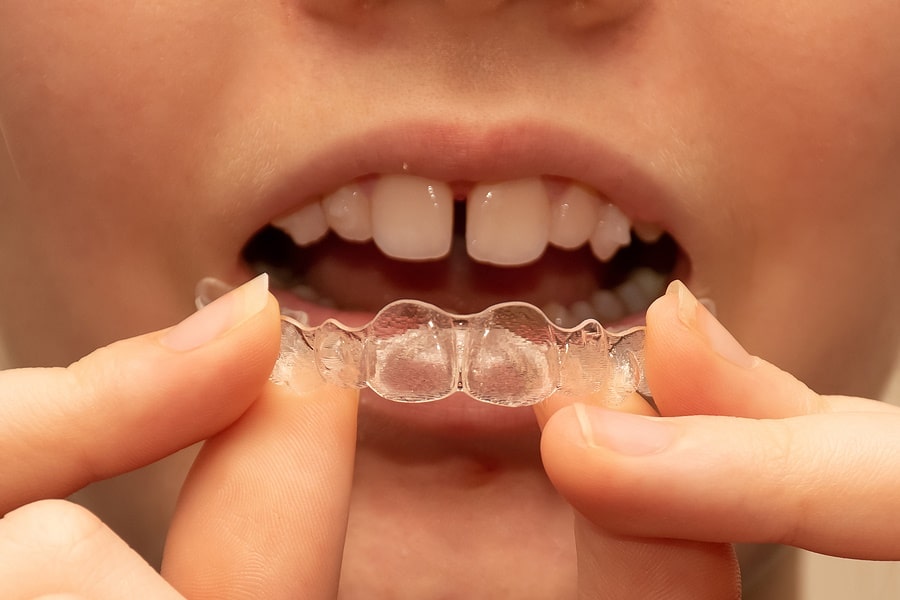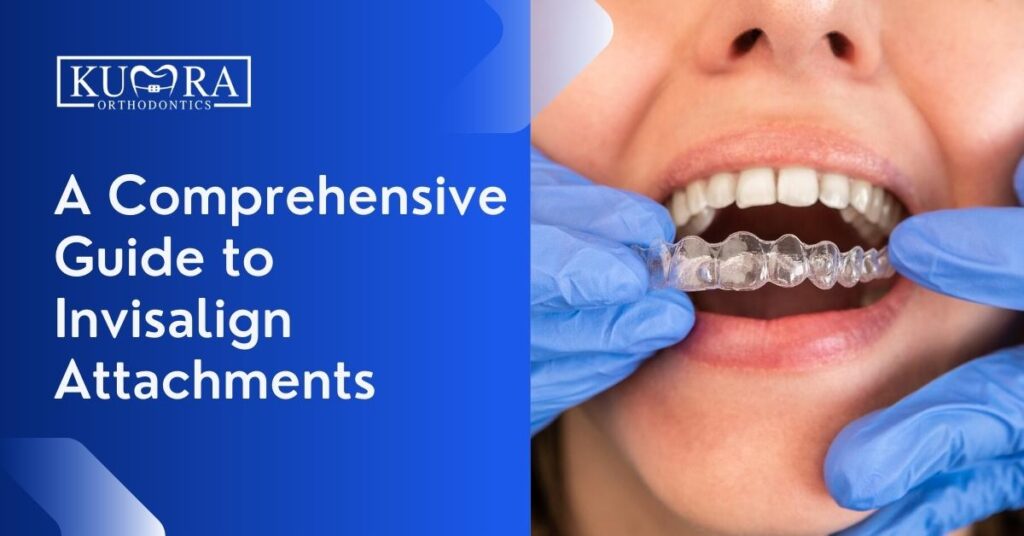What to Anticipate During Your Invisalign Journey: A Comprehensive Review
What to Anticipate During Your Invisalign Journey: A Comprehensive Review
Blog Article
Invisalign vs. Standard Dental braces: Which Choice Is Right for You?
When taking into consideration orthodontic treatment, the option in between Invisalign and traditional dental braces presents a number of important variables that warrant cautious analysis. Invisalign uses a discreet choice with detachable aligners, while typical dental braces provide an extra noticeable yet effective remedy for serious misalignment.
Review of Therapy Options

On the other hand, traditional dental braces contain steel brackets and cables that are bonded to the teeth. This technique applies constant stress gradually to accomplish placement. While effective for complicated orthodontic problems, standard dental braces require routine check outs for changes and can pose obstacles in keeping oral hygiene due to the problem of cleaning up around brackets and cables.
Both options have their merits, and the selection commonly rests on certain oral problems, lifestyle choices, and patient conformity. Inevitably, seeking advice from an orthodontic expert is critical for identifying the most suitable treatment plan customized to specific demands. Understanding the subtleties of each alternative can significantly influence the overall success of orthodontic therapy.
Aesthetic Considerations
A considerable aspect affecting the selection between Invisalign and traditional braces is the visual allure each treatment uses. Invisalign aligners are crafted from clear plastic, making them virtually undetectable when worn. This discreet look is particularly interesting adults and young adults who might really feel uncomfortable about their orthodontic therapy. The ability to maintain an all-natural smile throughout the placement process can considerably boost the patient's confidence in specialist and social settings.
On the other hand, standard dental braces consist of metal brackets and wires, which can be more visible. While innovations in orthodontic innovation have actually brought about the growth of smaller sized braces and colored elastics, traditional braces still keep a more noticeable profile. For some individuals, the visibility of braces might deter them from looking for necessary therapy.
Inevitably, the option between Invisalign and conventional braces might rest on individual preferences regarding aesthetics. Patients that prioritize discernment typically lean toward Invisalign, while those that are less concerned about presence may select conventional braces. Recognizing the visual effects of each choice is essential for making a notified decision that aligns with one's way of life and preferences.
Comfort and Convenience

In regards to comfort, Invisalign aligners are removable, enabling patients to enjoy their favorite foods without limitation and keep optimum dental hygiene. Cleaning and flossing are pop over to this site simplified, as the aligners can be secured throughout these routines, whereas standard dental braces need careful navigating around braces and cables.
In contrast, standard dental braces necessitate routine changes, making them less practical for those with active schedules. Generally, the comfort and benefit of Invisalign make it an enticing choice for numerous people looking for orthodontic treatment.
Therapy Period and Effectiveness
While both Invisalign and standard dental braces work in remedying oral imbalances, the duration of treatment can vary significantly between both alternatives. Normally, Invisalign therapy can take anywhere from 12 to 18 months, depending on the complexity of the instance. The clear aligners function by gradually shifting teeth into their preferred placements, and regular follow-ups with an orthodontist assistance ensure development continues to be on track.
In contrast, standard dental braces typically need a longer dedication, usually ranging from 18 months to 3 years. This is due to their set nature and using brackets and cords, which can be more efficient for severe misalignments and intricate situations (Invisalign). The treatment efficiency of traditional dental braces is well-documented, as they permit exact changes and greater control over tooth activity
Eventually, the option in between Invisalign and standard dental braces may rest on both the expected therapy period and the specific dental issues available. Consulting with an orthodontist is critical, as they can provide tailored referrals based upon individual needs, making certain the chosen technique aligns with preferred durations and end results.
Price Comparison and Insurance Policy Alternatives
Cost plays a significant role in the decision-making process for people taking into consideration orthodontic treatment, whether selecting Invisalign or traditional braces. Typically, the price of Invisalign varieties from $3,000 to $8,000, while conventional dental braces normally set you back in between $2,000 and $6,000. Variables influencing these costs consist of the complexity of the instance, the duration of treatment, and geographical location.
Insurance policy insurance coverage can dramatically influence out-of-pocket expenditures. Several oral insurance strategies give partial coverage for orthodontic therapies, yet the specifics can differ commonly. It is vital for clients to evaluate their view website insurance coverage to determine the level of coverage for either choice. Usually, standard dental braces may be more regularly covered by insurance coverage plans compared to Invisalign, which some insurance firms classify as a cosmetic procedure.
In addition, numerous orthodontic techniques provide versatile layaway plan, making both treatment choices extra easily accessible. Patients must make inquiries about possible financing choices and price cuts for in advance repayments. Assessing the overall expense, consisting of insurance policy benefits and layaway plan, is vital for making an informed choice that aligns with both visual choices and budget plan considerations.

Conclusion
In recap, the option in between Invisalign and conventional dental braces rests on numerous factors, including visual choices, comfort, therapy duration, and cost. Invisalign offers a very discreet, detachable alternative that assists in oral health and nutritional flexibility, while conventional braces may be better for complicated dental concerns and commonly come with a lower price point. Inevitably, consultation with an orthodontist is vital to Full Article examine specific conditions and determine one of the most ideal treatment alternative for accomplishing ideal dental placement.
When taking into consideration orthodontic treatment, the selection between Invisalign and conventional dental braces offers several important elements that merit mindful analysis.Contrasting Invisalign and standard braces discloses distinctive therapy alternatives for orthodontic correction.While both Invisalign and conventional braces are efficient in dealing with oral misalignments, the period of treatment can differ dramatically between the 2 choices.Expense plays a considerable role in the decision-making procedure for individuals taking into consideration orthodontic treatment, whether opting for Invisalign or standard braces.In summary, the choice in between Invisalign and conventional braces pivots on numerous variables, consisting of aesthetic choices, convenience, treatment duration, and price.
Report this page